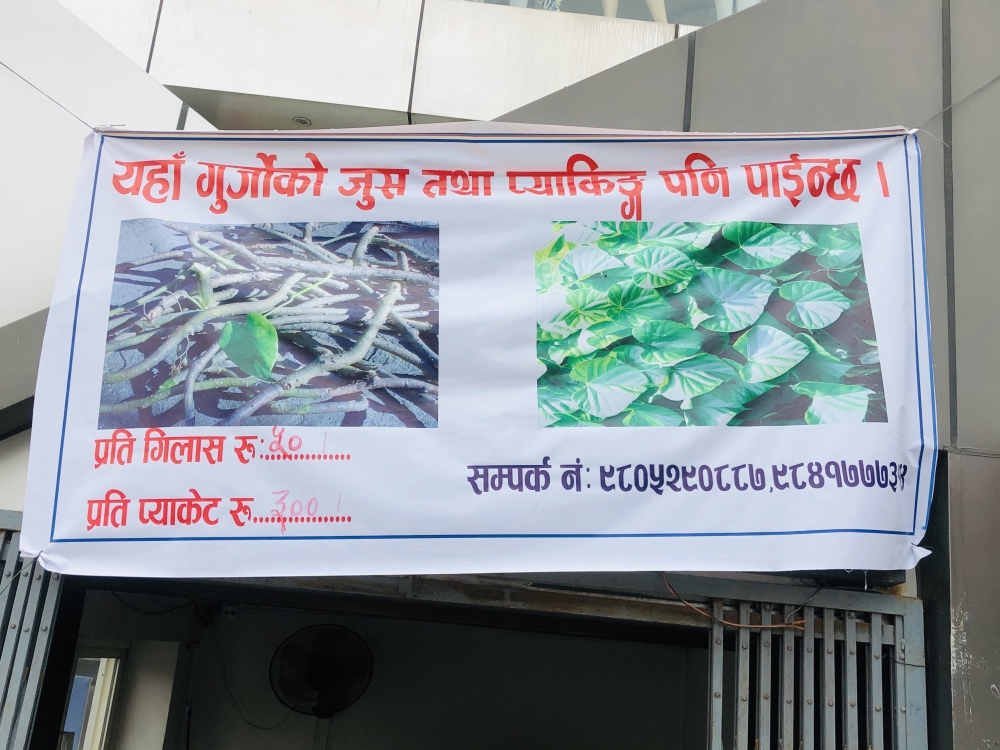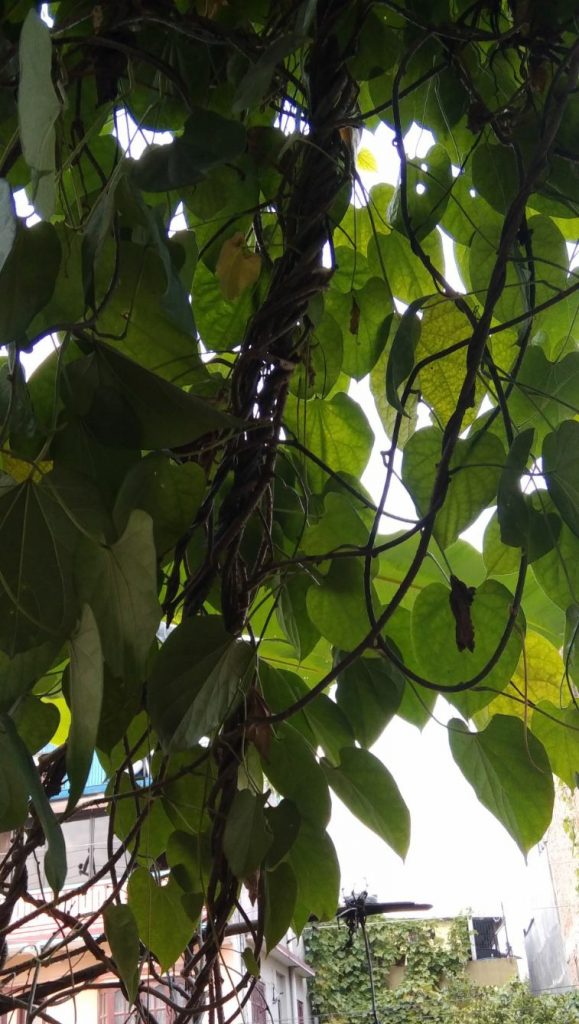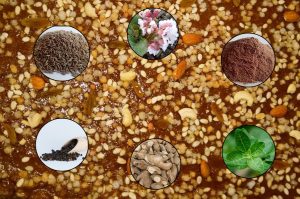Recently, a herb has gone viral on social media. Some Facebook pages have already begun selling it. Hundreds have posted pictures showing this climber plant, or its stem.
Yes, gurjo had not been as sought-after as it is today.
Some months ago, India’s celebrated yoga guru Baba Ramdev also advocated for its use. He said using this herb in combination with ginger, turmeric, tulasi, and pepper could boost people’s immunity so as to prevent the coronavirus. His statement also led this plant to fame.
Amidst a storm of hypes, the plantation, sale, and consumption of gurjo (Tinospora cordifolia) is thriving in Nepal also. Sounds surprising to many, this newly famed medicinal herb has been used in ayurvedic medicine for treating many ailments and chronic diseases like cancer, cold, diabetes, chronic fever, asthma, and many more.
Old use
Dr Kopila Adhikari, an Ayurveda physician (medical officer) at District Ayurveda Health Centre, Chitwan, confirms that this herb has been a part of ayurvedic medicine since ages. Sharing her experience, she informs, “We, Ayurveda physicians, have been prescribing this herb as a medicine, especially for chronic health problems so that other diseases or infections could not attack the patients.”

“This herb is known and traditionally used by many Nepalis and the people of ethnic communities to treat many ailments like heat exhaustion (heat sickness), jaundice, and others. It is just that these days media are writing about it massively.”
Describing the herb, she says gurjo is a herbaceous vine that grows and spreads extensively and has heart-shaped leaves with multiple elongated twining branches. Further, she adds, “Gurjo can be found abundantly in the wilds of the hills and plains of our country.” This climbing herb belonging to the Menispermaceae family is usually not found at a higher altitude.
This herb has got many names like ‘giloy’ in Hindi. Ayurvedic texts have used different words to refer to this plant: Amrita (as it supposedly gives longevity), Chakralakshanika (as per to identify it from other herbs based on its anatomical features), Chinnodbhava based on cultivation (as it can be cultivated by stem cutting and it would never get extinct), Rasayani (rejuvenating agents), and Guduchi. This plant is mainly found in the tropical regions of Indian subcontinents that include Nepal as well.
Use against Covid-19
As the country is fighting against the Covid-19 pandemic now, Ayurvedic medicine practitioners have been using the plant for boosting immunity power of people. Dr Adhikari explains that Ayurveda says this plant has one of the best rejuvenating agents (‘rasayana drabya’) that keeps all the ‘dhatus’ (tissues) of the human body healthy.
She says the immunity power of the people, especially of those who are already suffering from chronic diseases like diabetes, hypertension, kidney problems, and are on regular medication, is naturally weak. It is evident that when such people are infected by the novel coronavirus, it has been very difficult for them to fight back and many of these people have already succumbed to this disease as well. In such a case, using gurjo can be helpful for them to boost their immunity and fight against the virus.


Usage and benefits

Health benefits of gurjo are not limited to boosting immunity only. This herb is packed with chemical constituents like alkaloids, terpenoids, lignans, steroids, and others which has got anti-oxidants, antimicrobial, antibacterial, antifungal, anti-diabetic and antistress properties, hypolipidaemic effect, anticancer, and anti-HIV potential, antiosteoporotic effects, antitoxic effects, wound healing, anticomplementary activity, and immunomodulating activity.
Further, Dr Adhikari informs, “Gurjo is considered the best medicine for the treatment of gouty arthritis. Other than this, it is also extensively used for the treatment of diabetes, high blood pressure, fever, jaundice, skin diseases, and respiratory problems.”
Further, she says, “The usage of guduchi for the treatment of ‘shwasa roga’ (asthma/ breathing problem), ‘pratishyaya roga’ (common cold), and ‘kasa roga’ (cough) is clearly mentioned in Ayurvedic texts.” Interestingly, all three are counted as symptoms of Covid-19.
Though all the ‘panchanga’ (whole plant) from roots to leaves are used in the Ayurvedic medicine system, the stem of guduchi is of maximum utility. Being precise, Dr Ahikari explains, “The stem is majorly used for all of the abovementioned health problems. Likewise, its leaves contain a chemical that is hepatoprotective (liver tonic). Also, it is used for skin diseases.”
Caveats
Highlighting these properties and health benefits, Dr Adhikari also advises people to be careful about the usage and consumption of guduchi. Though the toxicity or side-effects of consuming gurjo haphazardly is not visible yet, she finds the way people have been consuming it almost every day nowadays, without consulting the concerned physicians, problematic.

She minutely clarifies, “Medicines are prescribed after observing certain conditions. While prescribing gurjo or any other medicine to the patient, We (physicians) use various diagnostic tools like ‘nadi pariksha’ (pulse diagnosis), ‘jihwa pariksha’ (tongue diagnosis), and others considering the nature, age, the status of ‘agni’ (digestion capability), ‘dosha’ (Vata: energy of movement, pitta: energy of digestion and metabolism, and kapha: energy that forms body structure) and their health conditions.”
“Only after the disease is diagnosed, we prescribe the dose, timings of the medicine and the way or state medicine should be consumed like mixing gurjo stems with crystal sugar, giving its powder and so on. And, this makes a huge difference.”
Therefore, she suggests consuming gurjo only after consulting Ayurvedic physicians while mentioning that there are plenty of such Ayurvedic health institutions and professionals in the country.





















